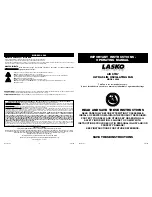
5–45
1
2
3
4
5
6
ït
çi
G3 FACSIMILE COMMUNICATIONS
5. MODULATION METHOD
After the document is scanned, the resulting image data is converted to
compressed digital data by coding described in the previous section. How-
ever, the telephone line that is used when transmitting that digital data is
for transmitting analog signals “voice,” and the digital data cannot be
transmit as it is. To transmit this data actually using the telephone line, the
digital data must be converted to analog data. Conversion from digital sig-
nals to analog signals is performed by the facsimile’s MODEM. Here, let’s
describe the various modulation systems that differ according to the
MODEM in use.
5.1
Modulation and Demodulation
On a facsimile, the digitally coded image data varies the analog carrier
wave. Converting digital signals to analog signals in this way is called
“modulation.” When modulation processing is performed, the digital
information is moved onto the changes in the carrier wave. Changing the
carrier wave in this way is called modulation by digital signals. There are
various modulation method: method that are amplitude-dependent, fre-
quency-dependent and phase-dependent, for example.
Let’s describe modulation using digital signals using a simple example to
aid understanding. Fig. 5-37 shows an example of Amplitude Shift Keying
(ASK) method.
Fig. 5-37 Example of Amplitude Shift Keying Modulation
Digital signal
Time
Time
Amplitude
(H)
(L)
1
1
0
1
0
1
0
0
1
0
1
1
1
1
0
1
0
1
0
0
1
0
1
1
”1”
”0”
Содержание 2000
Страница 36: ...1 28 Notes ...
Страница 62: ...Notes 2 26 ...
Страница 306: ...6 34 Notes ...
Страница 381: ...PRINTED IN JAPAN IMPRIME AU JAPON 0400AB0 40 0 CANON INC Printied on paper that contains 60 reused paper ...
















































